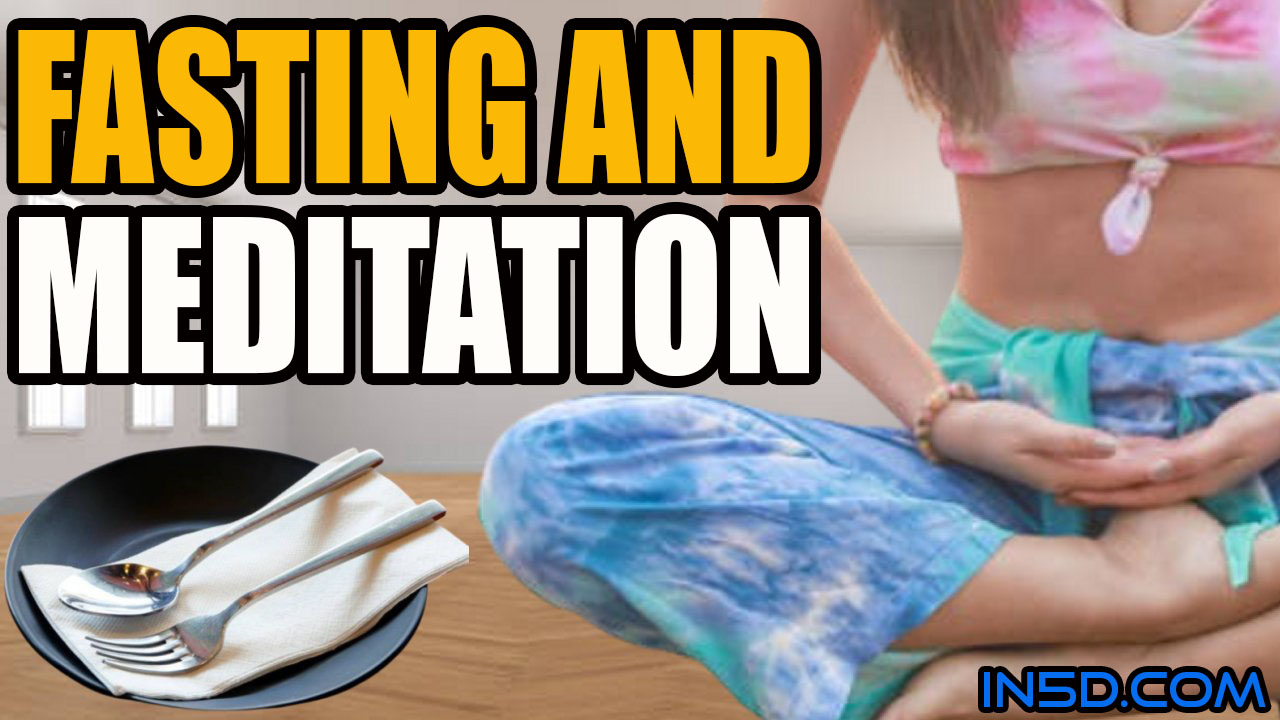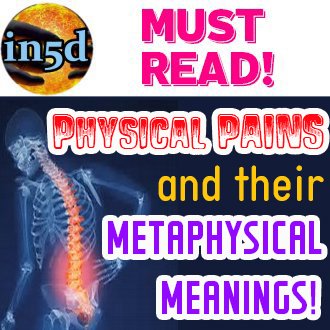Fasting And Meditation

Compiled by Gregg Prescott, M.S.
Founder, Webmaster, & Editor, In5D.com
First published on Feb 20, 2015
Updated Feb 3, 2024
Please note: This article is for educational purposes only and is not a recommendation to fast.
In today’s busy world, where things can get pretty hectic, some folks are finding comfort in two ancient practices: fasting and meditation. Fasting means taking a break from eating for a while, and meditation is about calming your mind and looking inward. These practices have been around for ages, and now people are turning to them for a holistic approach to feeling better. Combining fasting and meditation seems to be a powerful combo, not just for your body but also for your mind and spirit. Let’s explore how taking a break from food and practicing mindfulness can make a positive impact on your overall well-being.
After missing a few meals, whatever pain(s) the body has disappears almost entirely, in most cases. Hunger can be slightly bothersome during the first day or two of a fast. Then changes in the body and emotional or spiritual state start to become more obvious. Instead of the pain of whatever symptoms, such as sore throat or toothache, the body mainly experiences an acceleration of toxic elimination, and hunger generally abates. The mind, however, may be more attached to the thought of food than the body is.
During the pre-fasting symptoms — the evidence of illness that may prompt us to fast — the discharge of mucus is an unpleasant inconvenience and irritation. Those symptoms may continue until the fast is nearly finished. The urge to stop the symptoms, whether one is fasting or not, is understandable. However, even people’s cherished natural treatments, e.g., echinacea, vitamin C and homeopathic medicine, are stop-gap measures that do not offer a long-term solution, nor do they always work. Fasting always takes effect and means complete rest, and is more of a long-term solution. But it is not “the solution” because it does not by itself permanently change, for example, the habitual intake of artery-cloggers known as cheeseburgers, nor the intake of carbon monoxide and other toxins from sitting in cars.
Question: What’s so good about fasting? How long does it last?
Answer: Fasting is one of the secrets of long life. Your body, and your digestive organs in particular, are required to work and work without any vacation. You know that you require rest from your work or your school from time to time. In the same way, your digestive system needs a rest from time to time.
Periodic fasting provides the rest for your digestive system. It allows your digestive system to recuperate from the rough treatment that you may have given it by overeating or eating the wrong foods or eating at the wrong time.
In addition fasting also provides an opportunity to eliminate many toxins from your body. After fasting, you should take some lemon water with a bit of salt. This drink helps to flush the digestive system, eliminating waste material that might otherwise remain in the body if you didn’t fast.
Fasting also helps you to keep a balanced mind inspite of the attraction of the moon on the fluids of your body. That is why our fasting system is timed in relation to the moon. The eleventh day after the new and full moons is the time when this attraction is very strong. If you fast during this period, then the emptiness of the stomach pulls down liquids that would otherwise rise up in your body under the attraction of the moon.
Finally fasting also gives you a chance to save some time and use that time for spiritual pursuits. In order to eat, you may have to spend time shopping, cooking, cleaning and of course eating. If you fast, you can use that time to do meditation, to read or some other valuable pursuit.
This system of yogic fasting has a duration from sunrise to sunrise. You begin at sunrise on the fasting day and eat nothing. If your body is strong you can also refrain from drinking anything. On the next day, you can break the fast with lemon water, as I have mentioned above, and then with fruit and other suitable food.
Some people think that fasting is difficult. If you prepare yourself for fasting it is not difficult. Prepare yourself physically by taking enough food and also plenty of liquids the day before. Prepare yourself mentally by deciding the night before fasting: “Tomorrow is fasting day, and I am not going to eat anything.” If you take this mental determination prior to the fasting day, you will not be hungry during the fasting day. If you don’t make a prior determination, during the fasting day you will start to think “Maybe I should eat, and fast another day!” Decide beforehand and you will be able to complete your fast.
All in all, fasting is one of the best practices for maintaining physical, mental and spiritual health. I highly recommend it.
source: http://www.anandamarga.org/mryogi/fasting.htm
Stage 1 (Day 1-2)
On the first day of fasting, the blood sugar level drops below 70mg/dl. To restore the blood to the normal glucose level, liver glycogen is converted to glucose and released into the blood. This reserve is enough for a half day. The body then reduces the basal metabolic rate (BMR). The rate of internal chemical activity in resting tissue is lowered to conserve energy. The heart slows and blood pressure is reduced. Glycogen s pulled from the muscle causing some weakness. The first wave of cleansing is usually the worst.
Headaches, dizziness, nausea, bad breath, glazed eyes and a heavily coated tongue are signs of the first stage of cleansing. Hunger can be the most intense in this period.
Stage 2 (Day 3 to 7)
Fats, composed of transformed fatty acids, are broken down to release glycerol from the gliceride molecules and are converted to glucose. The skin may become oily as rancid oils are purged from the body. People with problem-free skin may have a few days of pimples or even a boil. A pallid complexion is also a sign of waste in the blood. Ketones are formed by the incomplete oxidation of fates. It is suspected that the ketones in the blood suppress the appetite by affecting the food-satiety center in the hypothalamus called the appestat. You may feel hungry for the first few days of the fast. This effect is temporary. The desire to eat will disappear. Lack of hunger may last 40-60 days.
The body embraces the fast and the digestive system is able to take a much-needed rest, focusing all of its energies on cleansing organs and the lungs are in the process of being repaired. Periodically, the lymphatic system expels mucoid matter through the nose or throat. The volume excreted of this yellow-colored mucus can be shocking. The sinuses go through periods of being clogged, then will totally clear. The breath is still foul and the tongue coated. Within the intestine, the colon is being repaired and impacted feces on the intestinal wall start to loosen and are autolyzed.
Stage 3 (Day 8 to 15)
On the latter part of an extended fast, you can experience enhanced energy, clear-mindedness and feel better than you have felt since childhood, On the downside, old injuries may become irritated and painful. This is a result of the body’s increased ability to heal during fasting. If you had broken your arm 10 yrs before, there is scar tissue around the break. At the time of the break, the body’s ability to heal was directly related to lifestyle. If you lived on a junk food diet, the body’s natural ability to heal was diminished.
During fasting, the body’s healing process is at optimum efficiency. As the body scours for dead or damaged tissue, the lymphocytes enter the older-damaged tissue secreting substances to dissolve the damaged cells. These substances irritate the nerves in the surrounding region and cause a reoccurrence of aches from previously injured areas that may have disappeared years earlier. The pain lasts as the body is completing the healing process. The muscles may become tight and sore due to toxin irritation. The legs can be the worst affected as toxins accumulate in the legs. Cankers are common in this stage due to the excessive bacteria in the mouth.
Stage 4 (Day 16 to 30)
The body is completely adapted to the fasting process. There is more energy and clarity of mind. Cleansing periods can be short with many days of feeling good in between. There are days when the tongue is pink and the breath is fresh. The healing work of the organs is being completed. After the detoxification mechanisms have removed the causative agent or renders it harmless; the body works at maximum capacity in tissue proliferation to replace damaged tissue. While a short fast will reduce the symptoms, a longer fast can completely heal. Homeostatic balance is at optimum levels. The lymphatic system is clean except for a rare discharge of mucus through the nose or throat. After day 20, the mind is affected with heightened clarity and emotional balance. Memory and concentration improve.
Stage 5 (Day 30 to ?)
(Breaking the Fast with the genuine return of Natural Hunger)
- The Breath, which during all or most of the fast has been offensive, becomes sweet and clean.
- The Tongue becomes clean. The thick coating which remained on it throughout most of the fast vanishes.
- The Temperature, which may have been sub-normal or above normal, returns to exactly normal, where it remains.
- The Pulse becomes normal in time and rhythm.
- The Skin reactions and other reactions become normal.
- The Bad Taste in the mouth ceases.
- Salivary Secretion becomes normal.
- The Eyes become bright and eye sight improves.
- The Excreta loses its odor. The Urine becomes light.
The primary indication that the fast is to be broken is the return of hunger; all the other indications are secondary. Often one or more of these secondary signs are absent when hunger returns, but one should not refrain from breaking the fast when there is an unmistakable demand for food, merely because the tongue, for example, is not clean. Inasmuch as all the signs do not invariably appear in each case, do not hesitate to break the fast when hunger returns.
Arguments for fasting
The thin person can and should fast, particularly if weight-gain has been difficult even when eating has been adequate. In my experience, fasting rebuilds the body and one attains a clean slate, making weight-gain finally possible beyond replacing the pounds lost in the fast.
In today’s toxic world, when PCBs and DDT are in breast milk, and all Americans have one or more forms of plastic or plastic additives in their urine, one would think that detoxification is vital. However, fasting is so unknown and ignored that I know of no before/after studies that have measured how much less a body’s petrochemical contamination is after a thorough fast. One therefore must base progress or improved safety “by feel,” and how much more immunity to disease, such as colds, may be clearly obtained by fasting. Fortunately, benefits such as immunity are substantial and noticeable.
Other benefits of fasting include improving erectile function. Generally, one does not feel like engaging in sex during a fast, but it is possible and pleasurable. The big point here is the future reward that helps make the fast worthwhile, if improved erections are desired. (Or take some Viagra and keep treating your body like a machine.) Another noticeable benefit from a fast is the improved retaining of one’s urine longer and more comfortably.
During a fast, just sleeping is a sheer pleasure. This particular feeling cannot be achieved by any other means, such as drugs or alcohol or sex. It’s fortuitous I’m on a little fast right now as I write; because I had forgotten the special sweetness of sleeping that can happen in a fast. Sometimes this pleasurable feeling is only upon waking up in the morning. The feeling can be absent or fleeting if one is not ready to eat. If the fast has done all its detoxification — through all one’s cells, it seems — then the ecstasy of awakening is long lasting and strong, causing one to bound out of bed in joy. Some of us take longer to reach certain points in the fast, and a full-cycle fast can take longer depending on age, toxicity and weight.
Donate to In5D
With over 6,000+ free articles and 1,200+ free videos, any donation would be greatly appreciated!
Much love for your kind donation,
Gregg
During the fast and one’s slowed pace, a peaceful though somewhat melancholy vibe usually takes over. Worries fall away and one relaxes while the mind lets go. Thoughts don’t stop; one does daydream, but stress is less. This feeling is meditative and deep, and may be hard to achieve or impossible to imagine without the fast. One’s usual eating state — while having the typical, modern, chronically high toxin level — seems to block the mind and spirit from becoming one with nature and the universe. Being on a short fast as I write this, I marvel at the more peaceful feeling I am enjoying. Slowing down our often frantic and usually busy day is vital for health and reflection. We evolved in a calmer, natural state, with a slower pace, than today’s industrial and technological lifestyle. Primitive people worked less than people of cultures of the Agricultural and Industrial Revolutions.
Many people want to be more spiritual and have a spiritual experience, in addition to being healthy. But many such people refuse to try the fasting route. Their interest in meditation and spirituality translates mainly to sitting, while their whole body is still distracted by the work of digestion (even between meals, the body is not cleansed of food and waste for long). They read, go on quests at retreats, and sing the praises of calming the mind to “tune into” the universe without workaday distractions. This is sincere but lacking in the most ready experience of total mind & body meditation: fasting with just water. Communion with nature and one’s own soul are easy and constant with fasting, lasting for days, but this sure-fire meditation is rejected or avoided simply because of one’s culture and our mind’s conditioned rules of habitual eating.
People are much more likely to take various mind-altering drugs for some instant Nirvana or cheap high than to try a fast. If they do later fast, the drug residues just have to come out, making the elimination phase of the fast that much longer.
People preach about meditation and spirituality, but for various reasons have never tried a fast except perhaps to go on a juice diet for a few days. Jesus reportedly fasted 40 days, but he was less unusual in his time and place than such a faster in the U.S. and many countries today. I know he must have gotten a lot out of his fast, an idea that anti-fasters of the Christian sects would also swear by as an article of faith — even though they never fast, as if Western medicine and the god of science take precedence over Jesus’s ways and teachings.
Some downsides of the fast
In my lifetime of fasting and witnessing others fast, I have never seen an adverse reaction to fasting; I have only seen mistakes upon eating before one is ready, or eating too much too soon, or eating too richly. The main consequences of those common pitfalls are (1) usually a sudden dissipation of the finished fast’s nirvana-like pleasure of feeling alive, and (2) the immediate loss of the renewed taste-buds’ new-found thrill after the fast. Self-control is difficult, so a knowledgeable companion or care-giver is very helpful.
One friend who took it upon herself to fast 26 days, after I described my experiences, endured a significant hair loss after the fast had ended several days before, but it all grew back. I do not know exactly how the fast was conducted or what constituted the resumption of eating. This event was worrisome to the woman, because she was unprepared for it. It was rare enough that I had never heard of it. She was glad she fasted anyway, as she had spent years handling chemicals as a painter and she wanted to detoxify.
Early symptoms of poor health or low immunity, such as a runny nose, are messages from the body to our conscious minds that there is an imbalance with our bodies, and that there needs to be rest and our intake altered. During the fast, elimination of mucus can start to increase or decrease, but the consistency of the mucus gets more concentrated. The smell and taste of the discharge, and the odor of the breath and urine, get stronger. The strongest elimination is that of vomiting, after which one feels much better.
Drinking water throughout is important, although may not be as pleasant as when we have just eaten a large salty meal. The middle portion of the fast is characterized by heavy elimination, and vomiting can be nightly two or three nights in a row. The mind and facial expression of the faster in this period are sometimes sad, bored, and possibly impatient. Nevertheless, healing is proceeding regardless and rapidly during this phase, and the fast should not be broken at this point. When the body has eliminated most of its toxins, the original “dis-ease” is gone, and pain-relief is usually complete, but the fast continues its final cleansing of the body’s toxins. Hunger may start to return slightly, and the tendency is for one to want to terminate the fast to shake off the boredom, enjoy normality once again, and taste those fabulous foods one has missed.
However, a white/yellow-coated tongue and listless behavior indicate that the fast should not be broken at such a time, despite the excellent detoxification that has been taking place. Letting the fast continue is important for maximum healing, as is complete rest. No vitamins or herbal teas should be taken to interrupt the fast (activating the digestive system and distracting the heart from sending the maximum amount of healing-blood to the rest of the body).
Walking in the garden is fine, but stress such as business calls is counter-indicated. The body can take some stress if there is no purpose to the walk other than to shake off some boredom and to behold the wonder of nature. Nature, and life itself, by the middle of the fast, have taken over the mind and spirit, and one’s full contemplation of nature and indoor surroundings is inescapable. Time has slowed down in the fast, which may be a consequence of the meditative state achieved by the complete rest and the desire to see the end of the fast. The memory of foods becomes almost overpowering. Paradoxically, the yearning for food and to indulge in taste sensations at this stage are an indication the fast is not complete. One needs to return to the novel or to quietly talk with a friend or family member. Great rewards come when detoxification is complete and the body and spirit feel better than ever.
An alternative to the fast that seems to detoxify is the Master Cleanse: a drink one makes of water, lemon juice, grade B maple syrup, and cayenne. A “salt water flush” is done once a day. The Master Cleanse calls for certain preparations and quantities of the ingredients. Judging from the white tongue during the Master Cleanse, that clears up after several days, and the need to rest most of the time, the Master Cleanse may be just right for many of us. It appears to be a way to keep up a semblance of a normal schedule, because calories are available to deal with some work or schooling. Somehow, though, the water-only fast would be much preferable for its simplicity, purity and faster results — and perhaps for the meditative benefit. The ingredients of the Master Cleanse comprise a strange diet, one must admit. It may be harder to refuse substantial food when one is on a very restrictive diet and the body is in an eating/digestion mode. But if people are opposed to fasting, or cannot obtain the privacy and support they deserve, they should perhaps try the Master Cleanse.
One should not advise fasting unless a competent and qualified helper is on hand to assist, as one needs guidance and support. It can’t be overstated that one’s stress must be minimized during and just after the fast. (I have had heart-rate unpleasantness from trying to do too many things in succession right after a 15 day fast, causing me to have to suddenly lie down and stop my activity for a half an hour.)
The person’s age and size has everything to do with how long one can fast, so it is important not to assume a young, thin person can go many days. A truly healthy person needs a truly short fast.
Sending you all infinite LOVE and Light!
Gregg
 Gregg Prescott, M.S., is the founder and editor of In5D and Zentasia. In 2009, Gregg launched In5D after experiencing what he describes as a “galactic download,” which provided him with the name “In5D” and the guidance to create the website. He co-owns In5D Club with his beautiful wife, Ali. His In5D Facebook page has over 370,000 followers, and his In5D YouTube channel has amassed 146,000 followers. Gregg is a visionary, author, a transformational speaker, and promotes spiritual, metaphysical and esoteric conferences in the United States through In5dEvents. Follow Gregg and In5D on various social media platforms, including Rumble, YouTube, Gab, Telegram, In5D Bitchute, Instagram, TikTok, Twitter, and TruthSocial to stay updated on his latest content and events./
Gregg Prescott, M.S., is the founder and editor of In5D and Zentasia. In 2009, Gregg launched In5D after experiencing what he describes as a “galactic download,” which provided him with the name “In5D” and the guidance to create the website. He co-owns In5D Club with his beautiful wife, Ali. His In5D Facebook page has over 370,000 followers, and his In5D YouTube channel has amassed 146,000 followers. Gregg is a visionary, author, a transformational speaker, and promotes spiritual, metaphysical and esoteric conferences in the United States through In5dEvents. Follow Gregg and In5D on various social media platforms, including Rumble, YouTube, Gab, Telegram, In5D Bitchute, Instagram, TikTok, Twitter, and TruthSocial to stay updated on his latest content and events./
Donate Crypto: https://cointr.ee/in5d
Image: Pixabay
In5D PATREON: Click here to help support our work thru Patreon. Your support is greatly appreciated!!!
Follow In5D on Patreon, Telegram, Twitter, Bitchute, TikTok, Instagram, Facebook, YouTube, and Truth Social @greggprescott



























